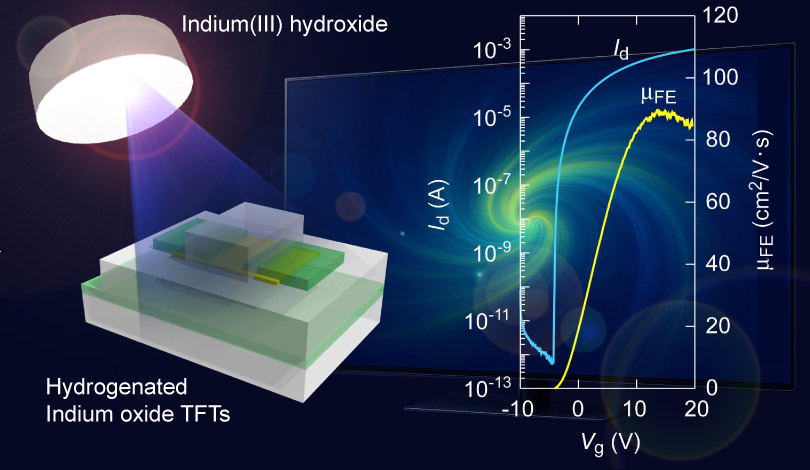High-Performance Thin-Film Transistors Manufactured Safely and Easily
ACS Appl. Electron. Mater. 7, 6952-6959 (2025). (DOI: 10.1021/acsaelm.5c00829)
Key Points
[1] Successfully introduced hydrogen into thin films safely and easily by using indium hydroxide as a raw material.
[2] Eliminated the need for hazardous hydrogen gas and complex pressure control processes, while achieving performance comparable to conventional methods.
[3] Achieved a field-effect mobility of approximately 90 cm2/V·s, accelerating next-generation display development.
Overview
A research group led by Hikaru Sadahira (Master’s Program, Graduate School of Information Science and Technology, Hokkaido University), Professor Hiromichi Ohta (Research Institute for Electronic Science, Hokkaido University), then-Assistant Professor Yusaku Magari (Research Institute for Electronic Science), and Professor Akira Miura (Faculty of Engineering, Hokkaido University) has successfully developed high-performance thin-film transistors (TFTs) with a field-effect mobility of approximately 90 cm2/V·s without using hazardous hydrogen gas or complex pressure control. Hydrogenated indium oxide TFTs have attracted attention as promising devices for next-generation displays, as they exhibit about ten times the field-effect mobility of the currently mainstream indium gallium zinc oxide (IGZO) TFTs. However, since hydrogen can explode when mixed with oxygen, conventional hydrogen gas-based fabrication methods have significant safety concerns. In August 2024, the group demonstrated high-performance TFTs without hydrogen gas, but that method required a complex process of precisely controlling the pressure inside the film deposition chamber. In the present study, the researchers developed a new method to safely and easily introduce hydrogen into the thin film by using indium hydroxide as the source material. This approach enabled the fabrication of high-performance TFTs without complex pressure operations. The achievement is expected to greatly accelerate the development of next-generation display TFTs. This research was published in ACS Applied Electronic Materials on August 3, 2025.


